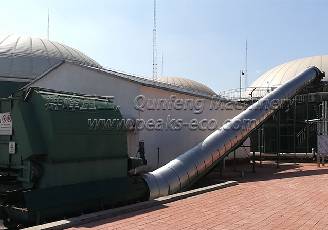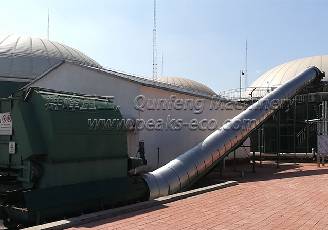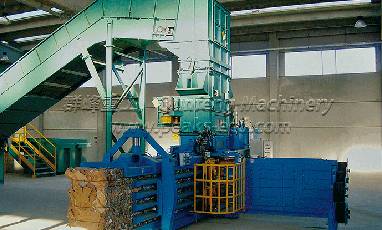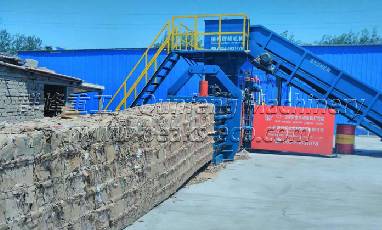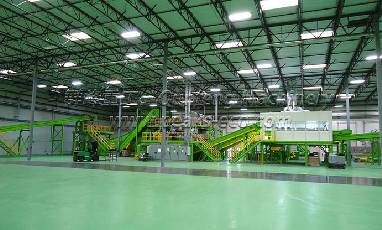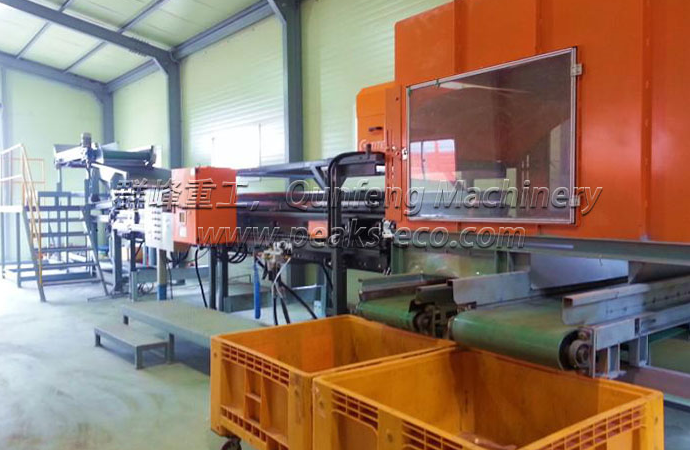3
Selection of mixing method in the digester
Anaerobic digestion system contact with the substrate of the reaction is bacteria, both need to make the fully mixed in the reaction process, so the mixture becomes very important. By designing a reasonable mixing method, the following objectives can be achieved: a) the fresh sludge can be fully mixed with the digested sludge rich in digestive bacteria to speed up the reaction speed;B) make the gas separate from the sludge smoothly and overflow the liquid level;C) keep the temperature and PH of the system uniform, and avoid the influence of temperature and PH changes on the digestive bacteria;D) prevent the formation of large amounts of scum in the pool.
There are three kinds of common stirring methods, which are gas stirring, mechanical stirring (including mechanical impeller stirring, mechanical lifting circular stirring), and sludge circular stirring. The domestic and foreign stirring methods are biogas stirring and mechanical stirring, and the sludge pump circulation method is rarely used due to the large power consumption. In the design and selection of agitators, the shape, volume, investment cost, and operation management requirements of digester should be considered comprehensively. The following are some common stirring devices:
1
Propeller mechanical agitator
Propeller-type mixing equipment is simple in composition, easy in operation, and small in maintenance. It can push the sludge upward or downward through the standpipe. Therefore, on the premise of fixing the sludge liquid surface, it can effectively eliminate the scum layer. However, when the propeller in the pool breaks down, the digestive system should stop running and enter the internal maintenance. The processing capacity of the propeller agitator was characterized by the number of times in one day the sludge from the digester was completely stirred or the time it took to complete a single stirring.
2
(2) suspension nozzle biogas agitator
The suspended nozzle biogas agitator consists of a biogas delivery standpipe and a nozzle suspended at the top of the tank. The agitators can be arranged at multiple points in the pool as needed and can be run in groups. Simple structure; Flexible setup and operation; Because it can be stirred in groups, the required stirring intensity is small; Strong adaptability to the pool; Not subject to liquid level control and other advantages. This type of agitator is suitable for the various pool shapes mentioned above and shows its advantages in the flat bottomed or tapered lower digester. The performance of the agitator is the same as that of the propeller agitator.
Anaerobic digestion system
3
Multi-beam tube biogas agitator
The multi-beam tube biogas agitator is composed of a multi-beam biogas conveying pipe (the beam pipe) and a biogas release port. The beam tube enters the pool from the middle of the top of the digester and extends to the outlet at the bottom of the pool. This agitator is characterized by its simple structure and easy operation. However, it is easy to block, so it is necessary to add an observation ball and high-pressure water washing device at the end of each beam tube on the top of the pool. Due to the setting of the methane outlet, it is concentrated in the middle of the bottom of the pool, which is suitable for the pool with a small diameter and a large slope. The selection of agitator depends on the volume of the whole tank.
4
At the bottom of a number of blowpipe biogas agitator
The bottom of the multi-blowpipe biogas agitator is mainly composed of a multi-pipe biogas conveyer and a biogas release port. The biogas pipe can enter from the sidewall at the top of the tank or the side of the tank, and extend along the bottom of the tank to the middle of the tank and connect with the biogas outlet. Similar to the multi-beam tube biogas agitator, this type of agitator is characterized by its simple structure and easy operation. However, it is easy to block, because the biogas release port is located in the middle of the bottom of the pool, which is suitable for the pool with a small diameter and a large slope. The selection of agitator is based on the volume of the whole tank.
Among the four common agitators mentioned above, the propeller mechanical agitator is a mechanical agitator, and the other three are all biogas agitators. This is mainly because biogas mixing has many advantages: a) the flow of biogas drives the internal circulation of sludge;B) the turbulence effect prevents the generation of scum, the mixing effect is good and the gas separation effect is improved;C) the use of biogas does not need to consider the tank type and liquid level. There are also some disadvantages of biogas mixing: a) the composition is complex, generally including biogas compressor, biogas injection pipe, biogas recycling pipe, condensate water discharge equipment, and biogas filter, etc., resulting in complex operation management; B) firedamp is a flammable and explosive gas, and equipment for firedamp requires special safety measures.
Compared with anaerobic digestion, aerobic digestion aims at producing stable products through the oxidation of biodegradable organic matter, reducing mass and volume, reducing pathogenic bacteria, and improving the characteristics of sludge for further treatment.
Aerobic digestion is usually used in sewage plants with a treatment capacity of less than 1.89×104m3/d, and the primary sludge is usually mixed with the secondary sludge for digestion, at which time the oxygen demand is greater than that for the treatment of individual biological sludge. The digestion tank should be equipped with grills and slag skimming equipment. The inlet water should not contain high inorganic substances and should be ground to prevent the blockage of the aeration equipment. Even so, the aeration facilities still need to be fully considered to prevent the accumulation of grease and scum on the surface of the digester.
